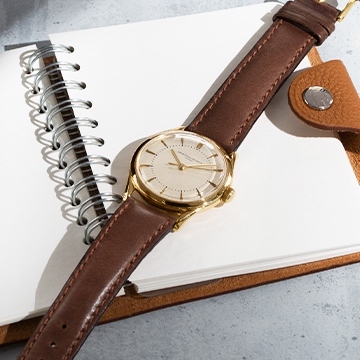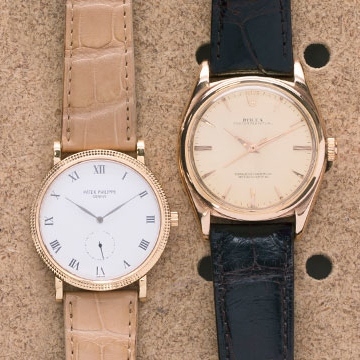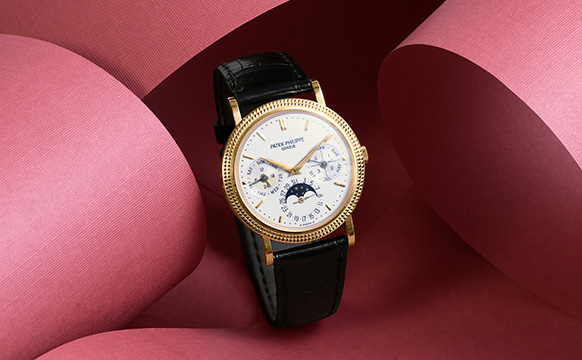
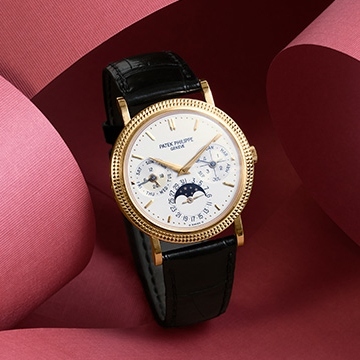
Why a Perpetual Calendar Is a Grail Watch for Collectors
One of the ultimate feats of mechanical engineering in watches, a perpetual calendar is able to accurately display the day, date, month, year and leap year, all in the space of a normal-sized wristwatch (usually 40-42 millimeters in diameter, or about 1.58 to 1.73 inches). The watch’s mechanics are designed to recognize the length in days of every month, and even correctly add a 29th day to February in leap years. A perpetual calendar watch can have 1,000 individual parts in its movement, and can take six months or more to construct.
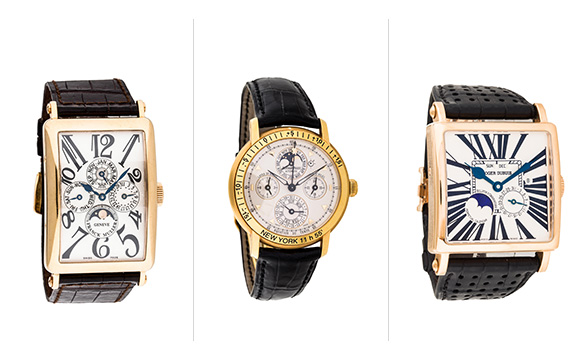 Franck Muller Long Island Watch; Audemars Piguet Jules Audemars Equation Of Time Watch; Roger Dubuis Golden Square Watch
Franck Muller Long Island Watch; Audemars Piguet Jules Audemars Equation Of Time Watch; Roger Dubuis Golden Square Watch
So why is the perpetual calendar so prized by collectors, when a smartphone can give you the same information at the touch of a button? True watch collectors favor mechanical timepieces, which are not dependent upon a battery or computer chip in order to tell the time. Collectors are fascinated by these mini mechanical marvels, which will work perfectly for decades with proper maintenance. Once a collector has caught the mechanical watch bug, over time he or she will aspire to more and more functions, or complications. The more complications a watch has, the more it represents a feat of mechanical craftsmanship and watchmaking know-how. Once every four years on the eve of leap day, die-hard perpetual calendar collectors eagerly wait for their timepieces to pass the ultimate test of jumping to 29 from 28.
Interestingly, the perpetual calendar function was not invented by a Swiss watchmaker, but by an Englishman named Thomas Mudge in the 1700s. A master watchmaker, Mudge also invented the minute repeater and equation of time complications. While the word “complication” normally has negative connotations, in watchmaking it means that the watch can do something extraordinary. A chronograph function is an example of a complication; it’s like having a mini stopwatch on your wrist. A perpetual calendar is high up on the ladder of the most complicated of watches and therefore highly sought-after and prized by collectors. These watches are not trendy pieces; rather they are made to last a lifetime and beyond. In fact, most perpetual calendars will remain accurate until the year 2199 without the need for an adjustment or correction. Why 2199? Because 2200 will not be a leap year. While leap years generally occur every four years, every 100 years, there is no leap year. Most, but not all, modern perpetual calendars adjust for the year 2100, making 2200 the first year that they will need a one-day adjustment.
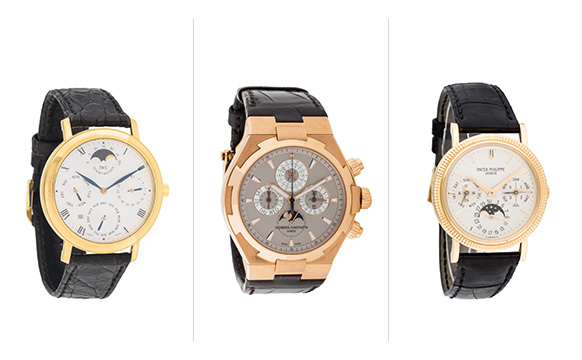 IWC Portofino Perpetual Calendar Watch; Vacheron Constantin Overseas Chronograph Perpetual Calendar Watch; Patek Philippe 5039J Perpetual Calendar Watch
IWC Portofino Perpetual Calendar Watch; Vacheron Constantin Overseas Chronograph Perpetual Calendar Watch; Patek Philippe 5039J Perpetual Calendar Watch


